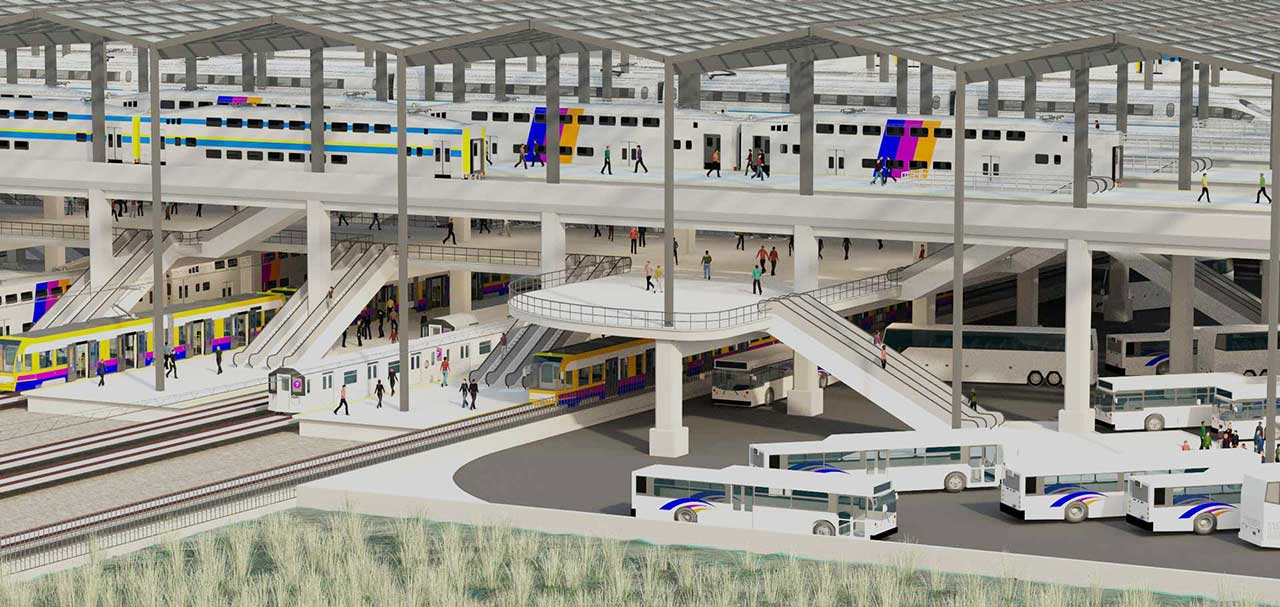
New York City-based ReThink Studios has rethought the way transit could be organized, possibly providing a solution for the Tri-state’s transportation headaches. The ReThink NYC Plan 2050 was floated at a free forum at The Cooper Union on Tuesday, May 9th, and proposed combining bus and train networks into one regional system: “By rethinking how we invest in our public transit infrastructure, we can build a world-class region that makes it possible to get from anywhere to everywhere”.
With Penn Station in crisis, the recent announcement that NJ Transit rerouting its second busiest lines to Hoboken, the general overcrowding of PATH trains and regular delays for both Hudson River vehicular tunnels, an ambitious rethinking of the region’s transportation is long overdue.
ReThink NYC Plan 2050 builds on the existing Gateway Project that proposes construction of new Hudson River tunnels, a new Portal Bridge over the Hackensack River, two new tracks in New Jersey, and connections for Bergen County trains to access the Northeast Corridor. All of these infrastructure projects, however, depend on federal funding that may falter due to proposed budget cuts by President Trump.

Plan 2050 would transform Secaucus Junction into a transportation hub that mirrors New York Penn Station across the Hudson River by extending the 7 train into New Jersey, running the PATH and the Hudson-Bergen Light Rail into the station, and building a bus terminal which would ease the minds of industry insiders–the proposed Bergen Loop of the Gateway Project could clear out Secaucus Junction of NYC-bound commuters who would no longer have to transfer trains.
Plan 2050 finds funding by scrapping the current site plan for an annex south of Penn Station. Many criticize Penn South because the new tracks would dead end there. As an alternative, ReThink Studios suggests extending the existing tracks to run under the Farley Post Office on 8th Avenue, soon-to-be-called Moynihan Station.
Platforms could then provide more stairs and escalators, easing crowds and reducing turnover time between trains. The number of tracks would be reduced from 21 to 12, but the flow would be organized into westbound and eastbound, eliminating the need for trains to cross in front of each other. Overall, train service would increase by 25%.
Many call the plan visionary, but most remain skeptical and point out that still $13 billion of the plan isn’t funded. Congestion pricing and even voter-approved taxes for transit projects have been suggested. Thinking regionally rather than locally and rethinking the boundaries of transit seems more evolved than visionary to ReThink Studios and perhaps the only logical way to move people in the future.
If you agree it’s time to upgrade our deteriorating infrastructure, you can join the cause by signing ReThinkNYC’s petition here: Fix Penn Station. Fund Amtrak’s Gateway Project.